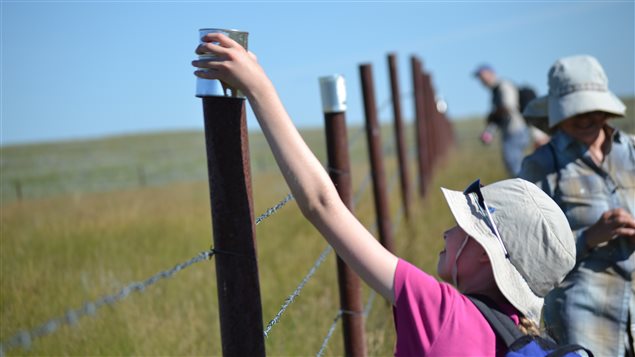Offer
Provide additional details about the offer you're running.
Provide additional details about the offer you're running.
Provide additional details about the offer you're running.

Image: Tiffany Cassidy/Nature Conservancy of Canada
With the primary focus of keeping bison fenced in, the Old Man on His Back conservation site is home to roughly 160 km of metal fencing, which has turned out to be slightly problematic for a number of birds in the area.
The Old Man on His Back Prairie and Heritage Conservation Area (OMB) is located in southwestern Saskatchewan and is managed by the Nature Conservancy of Canada after taking over in 1995. Since then the area has been utilized and leased for sustainable cattle grazing and for the management of genetically pure plains bison.
In addition to cattle and bison, the OMB is also home to a number of plants and other animals such as various birds, swift foxes, pronghorn antelope and both whitetail and mule deer species.
As time went on, employees began noticing a peculiar event that seemed to be more common than many would have liked. The surrounding fences are constructed using metal drill pipes and each post contained a hole in the top, measuring about 5 cm in diameter. As many species of birds used the fence line as a perch, some birds actually ended up falling into the open posts and many were unable to get back out.
In an attempt to deal with the problem, The Nature Conservancy of Canada bought and installed a number of fence caps, not unlike the ones you could get at any general retailer such as Home Depot. The problem being, this solution ended up being extremely expensive and with budgetary constraints, made it difficult to cap the entire fencing structure.
It wasn’t long before a pair of employees had an “ah-ha!” moment.
“We looked at each other and thought ‘well what’s plentiful, what’s in abundance and what’ll fit,’” Dale Gross, a natural areas manager with the conservancy told Radio Canada International.
Recycling used food cans were the perfect and budgetary-friendly solution the organization had been looking for. Gross along with another colleague headed out to a nearby recycling facility and initially collected enough cans to cap 300 posts, covering a total of about 1.6 km of fence line.
While the solution proved to be financially efficient, the process of installing each can and hammering it overtop of each fence post was one that, while simple, was extremely time to consume. At this point, the Conservancy has successfully capped about five kilometers of fencing, but still have a ways to go to complete the remaining 155 km of fencing.
In the meantime, Gross and his colleagues are canvassing for more cans along with the volunteers to aid them in getting them installed over the remaining fence posts.
High Quality Blend